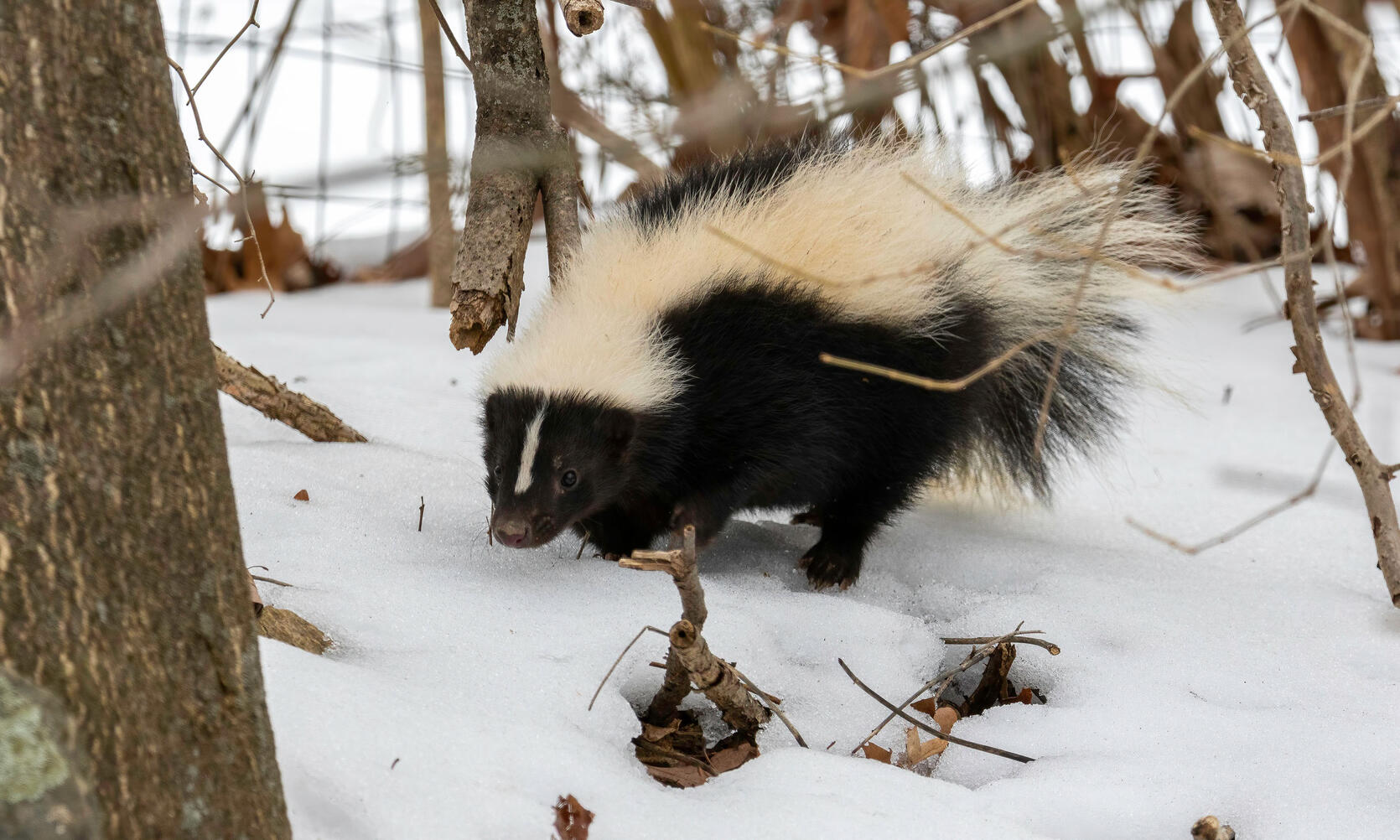- Division of Fisheries and Wildlife
Media Contact
Media Contact, MassWildlife

Praying mantises
Praying mantis males really give it their all when they find a mate. A female releases pheromones to broadcast to nearby males that she is looking for a mate. A male uses his antennae to find a female and will tap his antennae on her upper back to calm her down during mating. He wants to keep her happy because ~25% of the time, females eat the heads of the males after mating! While the male doesn’t survive for long, he can finish the mating process without a head. Praying mantises are cannibalistic throughout their lives. Eating her mate gives the female nutrition to produce her young.
Fallfish
Nice guys may finish last when it comes to fallfish. Dominant males build nests and release pheromones to entice a female to visit his nest and release her eggs. Other satellite males forgo building their own nests and lurk around others’ nests instead. Once a female releases her eggs, these satellite males compete to fertilize them even though they didn’t do any of the work. There are only a few dominant males at a time so most males will only reproduce by being a sneaky satellite male.
Bald eagles
Bald eagles give a new meaning to “falling in love” as they sometimes participate in death-defying stunts to court a mate! Bald eagle pairs have been seen doing a courtship behavior where they lock talons in the air and tumble towards the ground. This high-stakes behavior usually results in them releasing talons just before hitting the ground, however sometimes their timing is off and they crash.
Spotted salamanders
For most amphibians and reptiles, their love lives are pretty ice cold during Valentine’s Day…literally. In the winter, most amphibians and reptiles are in a completely dormant state to cope with the colder temperatures. Not a whole lot of action.
Once the temperatures get warmer, their love lives also heat up and males face stiff competition. In March or April, spotted salamanders can be seen in breeding “congresses” where males gather in a swarming ball and wait for females to arrive.
Skunks
Pepe Le Pew was always on the hunt for love, but most skunks are actively finding mates from February through March. Once a female has mated, she will reject any other male suitor by viciously fighting them. Rejection stinks, even for skunks!
Because they are actively trying to find mates at this time of year, you may smell skunks more than usual. Males are on the move and searching for females at their winter denning sites, sometimes traveling up to 2.5 miles in a night.
